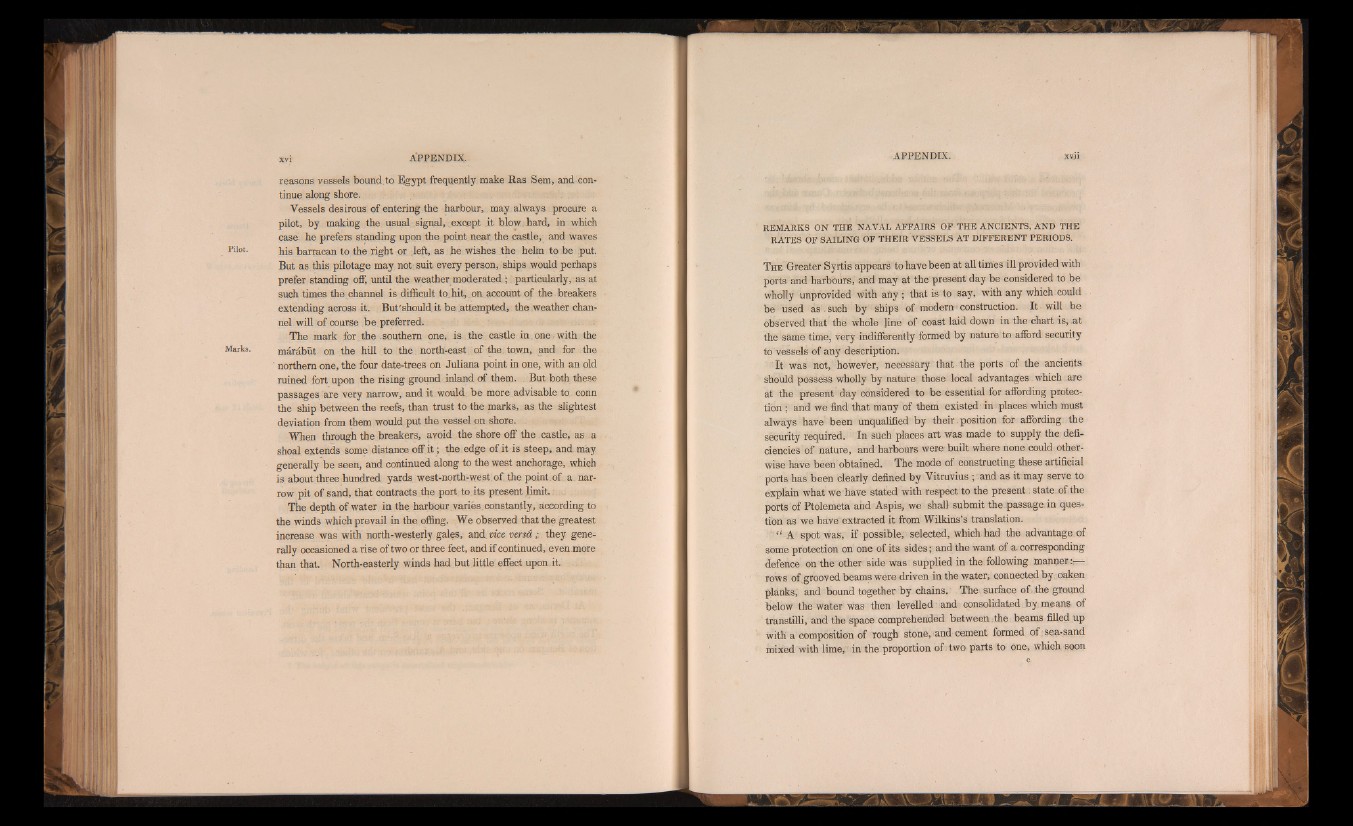
Pilot.
Marks.
reasons vessels bound to Egypt frequently make R a s Sem, and continue
along shore.
Vessels desirous of entering the harbour, may always procure a
pilot, by making the usual signal, except i t blow hard, in which
case he prefers standing upon the point near the castle, and waves
his barracan to the right or left, as lie wishes the helm to be put.
But as this pilotage may not suit every person, ships would perhaps
prefer standing off, until the weather moderated ; particularly, as at
such times the channel is difficult to. hit, on account of the breakers
extending across it. . But'should.it b e attempted, the .weather channel
will of course b e preferred.
The mark for the .southern one, is the castle in ,o n e , with the
marabut on the hill to the . north-east , of the . town, and for the
' northern one, the four date-trees on Juliana point in one, with an old
ruined fort upon the rising ground inland of them. But both these
passages a re very narrow, and i t would b e more advisable to conn
the ship between the reefs, than trust to the marks, as the slightest
deviation from them would, put the vessel on shore.
When through the breakers, avoid the shore off the castle, as a
shoal extends some distance off i t ; the edge of it is steep, and may
generally b e seen, and continued along to the west anchorage, which
is about three hundred yards west-north-west,of. the point.of. a narrow
p it of sand, that contracts the port to its present limit-----
The depth of water in the harbour varies constantly, according to
the winds which prevail in the offing. We observed that the greatest
increase was with north-westerly gales, and vice versa ■ they generally
occasioned a rise of two or three feet, and if continued, even more
than that. North-easterly winds had but little effect upon it.
REMARKS ON THE NAVAL AFFAIRS OF THE ANCIENTS, AND THE
RATES OF SAILING OF THEIR VESSELS AT DIFFERENT PERIODS.
T h e Greater Syrtis appears to have been at all times ill provided with
ports and harbours, and may at the'present day be considered to be
wholly unprovided with any ; th a t is to say, with any which could
be used as . such b y ships of modern-construction. I t will be
observed th a t the whole Jine of coast laid down in th e chart is, at
the same time, very indifferently formed by nature to afford security
to vessels of any description.
I t was not, however, necessary that the ports of the ancients
should possess wholly by nature those local advantages which are
at the present day considered to be essential for affording protection
; and we find that many of them existed in places which must
always have been unqualified by th e ir . position for affording, the
security required. In such places art was made to - supply the deficiencies
o f nature, and harbours were built where none could otherwise
have been obtained. The mode of constructing these artificial
ports has be en clearly defined by Vitruvius ; and as it may serve to
explain what we have stated with respect to the p re s e n t: state of the
ports of Ptolemeta ahd Aspis, we shall submit the passage, in question
as we have extracted it from Wilkins’s translation.
' “ A spot was, if possible, selected, whichhad the advantage of
some protection on one of its sides; and the w ant of a corresponding
defence on the other side was supplied in the following manner:;—
rows of grooved beams were driven in the w ater, connected b y oaken
planks, and bound together by chains. The surface o f the ground
below the water was then levelled and consolidated by means of
transtilli, and the space comprehended between the beams filled up
with a composition of rough stone, and cement formed of, sea-sand
mixed with lime," in the proportion of two parts to one, which soon